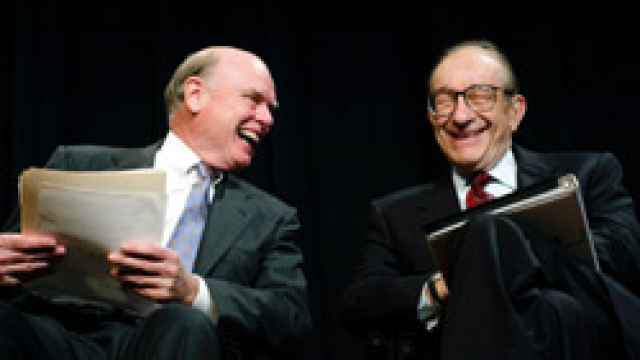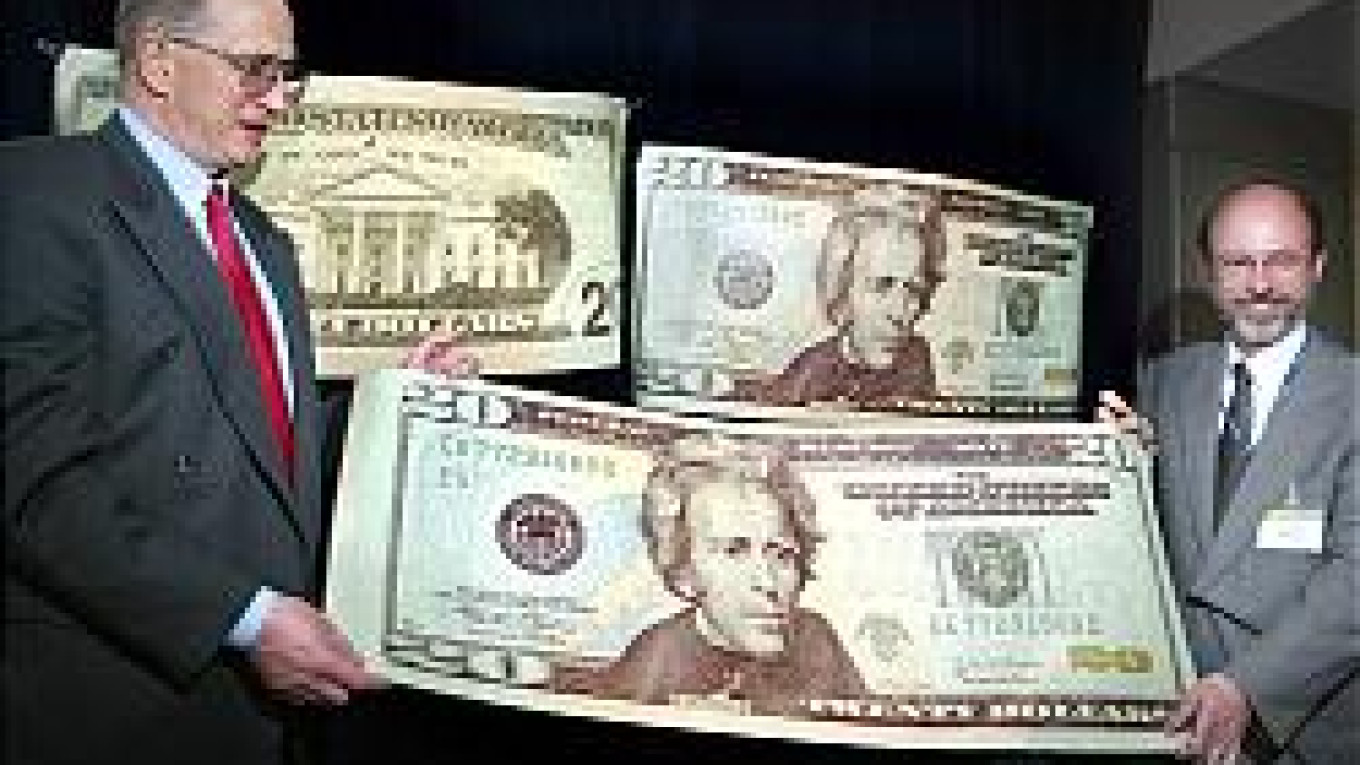The revamped bill -- which shines peach, green, blue and yellow, depending on the light -- will not go into circulation until October. But the U.S. Treasury and Federal Reserve on Tuesday kicked off a public education campaign that is to cover every corner of the planet and is aimed at all age groups, from schoolchildren to retirement communities.
"The U.S currency is a worldwide symbol of security and integrity. This new design will help us keep it this way, by protecting against counterfeiting and making it easier for people to confirm the authenticity of their hard-earned money," U.S. Treasury Secretary John Snow said at a inauguration ceremony for the bill in Washington and broadcast live to reporters at the U.S. Embassy.
The symbolic inauguration started with a video depicting Americans of all ages speaking proudly of the dollar. They called the dollar the symbol of freedom, stability and security and a key plank in the foundation of the American dream. Before Snow took the platform, a handful of scouts read an oath and paraded around with an American flag.
In Russia, the introduction of the new $20 bill is unlikely to cause big problems. According to Viktor Melnikov, a deputy chairman of the Central Bank, $20 bills account for no more than 1 percent of the dollars changing hands in Russia, while the $100 bill still remains the favorite, representing 80 percent of all U.S. banknotes in the country.
Restyled $100 notes won't be introduced until 2005, while new $50 bills are to appear next year.
Melnikov also noted that the inflow of U.S. dollars has shrunk drastically over the past few years.
"While between $33 billion and $37 billion was brought into Russia in 1996, only $14 billion arrived in the country last year," Melnikov told reporters at the U.S. Embassy.
He said the U.S. dollar is also losing in popularity to the stronger euro. Just a few years ago it made up 95 percent of all foreign currency circulating in the country. But the amount dropped to 40 percent in the first quarter of 2003, while the euro rose to 58 percent.
As U.S. officials presented the new bill Tuesday, the dollar continued a months-long drop against the ruble. The Central Bank set the exchange rate for Wednesday at 30.98 rubles to the dollar -- the first time the dollar has cost less than 31 rubles since March 2002.
On the redesigned $20 bill, the oval frame around U.S. President Andrew Jackson has been removed in favor of a peach-colored background. In the background to the left of the portrait is a large blue eagle, and in the background to the right are the words "Twenty USA, USA Twenty" in blue. The "20" in the lower right corner changes color -- from copper to green -- depending on the light.
 Kevin Lamarque / Reuters U.S. Treasury Secretary John W. Snow, left, and Federal Reserve Chairman Alan Greenspan having a laugh during the unveiling in Washington. | |
The bill also bears Snow's signature.
The bank note does retain familiar security features, many of which were introduced when it last underwent a redesign in 1998. There is a watermark of Jackson's portrait and a security thread.
New color schemes also will be introduced for other notes: The bigger the denomination, the darker the colors.
The United States plans to redesign dollar bills every seven to 10 years, and all changes are aimed at countering counterfeiters, U.S. officials said.
"The soundness of a nation's currency is essential to the soundness of its economy," Greenspan said at the Washington ceremony. "And to uphold our currency's soundness, it must be recognized and honored as legal tender, and counterfeiting must be effectively thwarted."
He also jokingly complained that he had not been allowed to have a free sample of the new note.
A Message from The Moscow Times:
Dear readers,
We are facing unprecedented challenges. Russia's Prosecutor General's Office has designated The Moscow Times as an "undesirable" organization, criminalizing our work and putting our staff at risk of prosecution. This follows our earlier unjust labeling as a "foreign agent."
These actions are direct attempts to silence independent journalism in Russia. The authorities claim our work "discredits the decisions of the Russian leadership." We see things differently: we strive to provide accurate, unbiased reporting on Russia.
We, the journalists of The Moscow Times, refuse to be silenced. But to continue our work, we need your help.
Your support, no matter how small, makes a world of difference. If you can, please support us monthly starting from just $2. It's quick to set up, and every contribution makes a significant impact.
By supporting The Moscow Times, you're defending open, independent journalism in the face of repression. Thank you for standing with us.
Remind me later.


